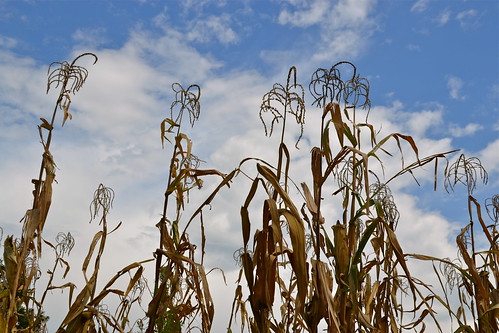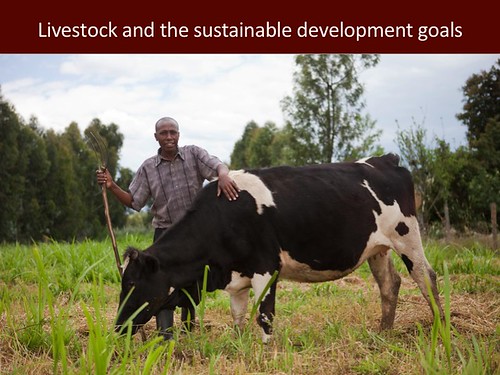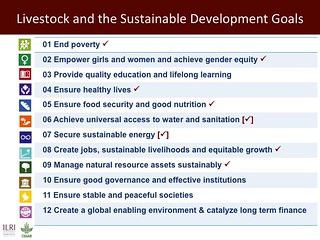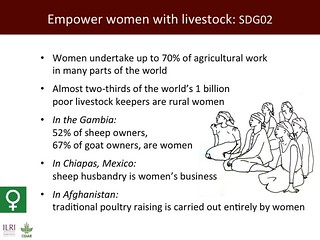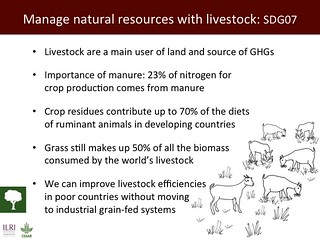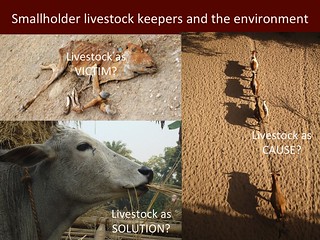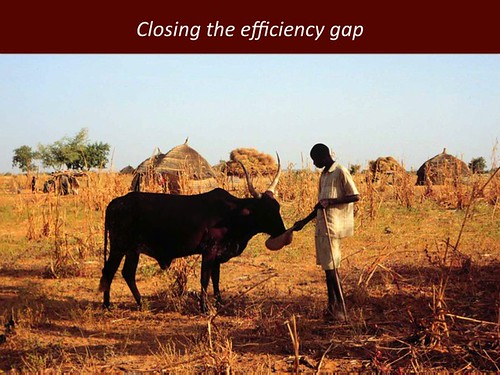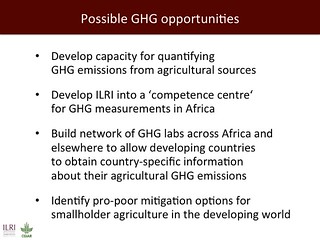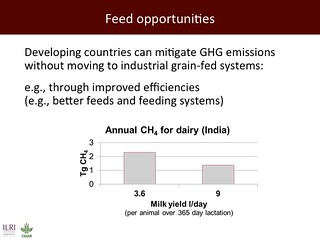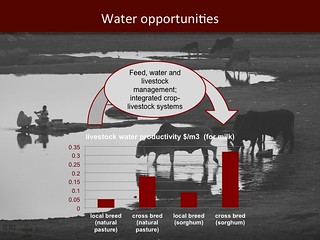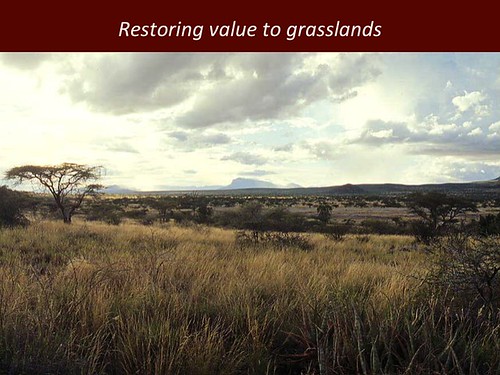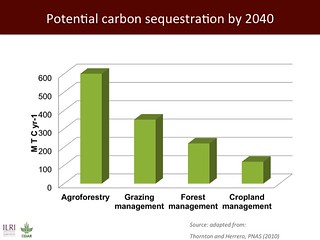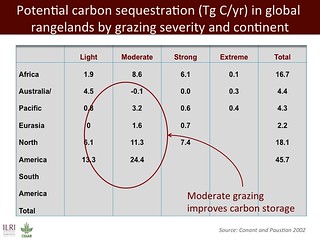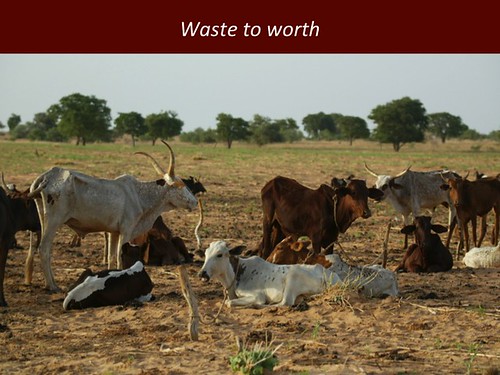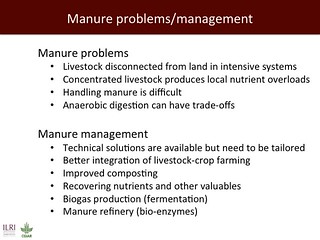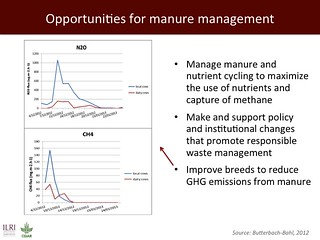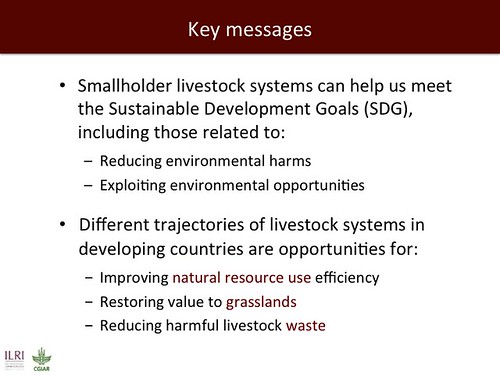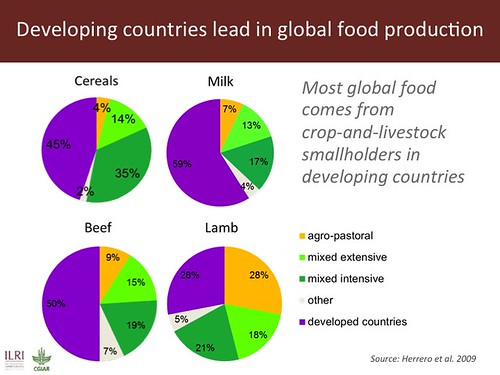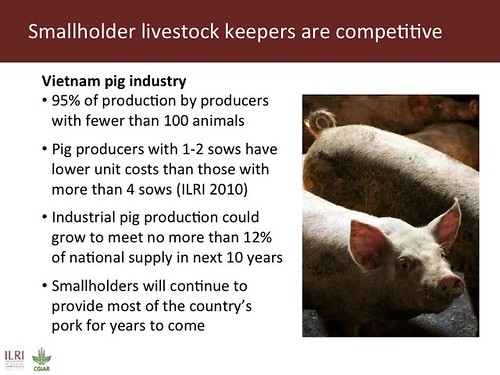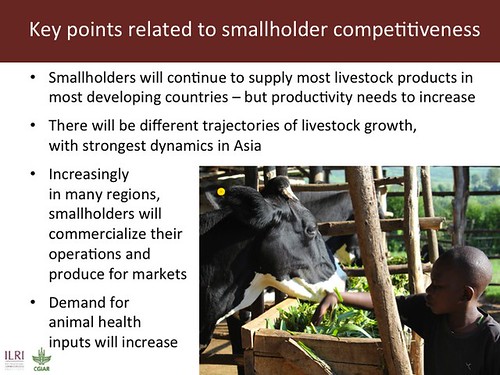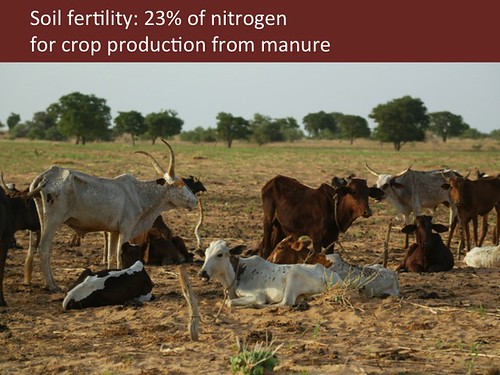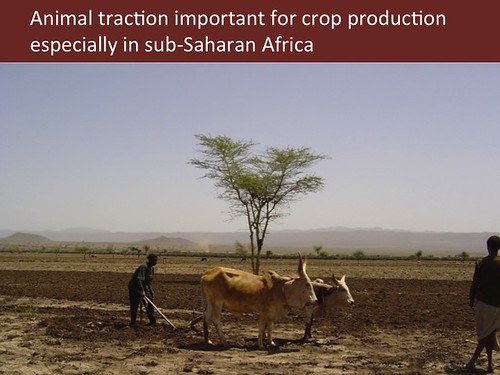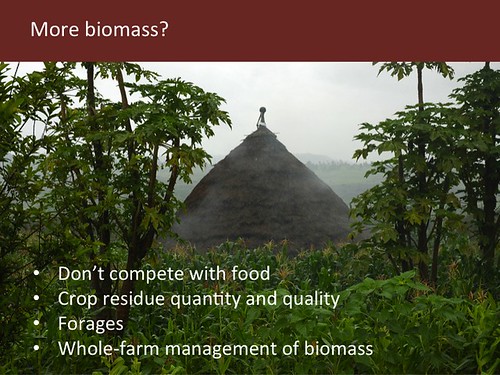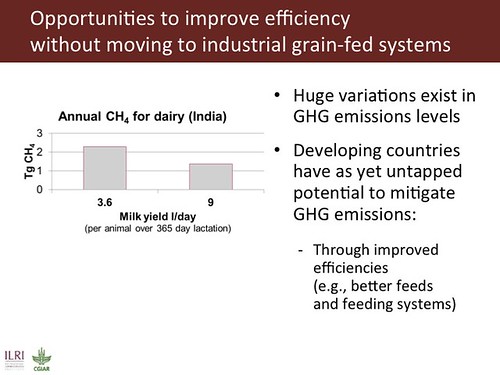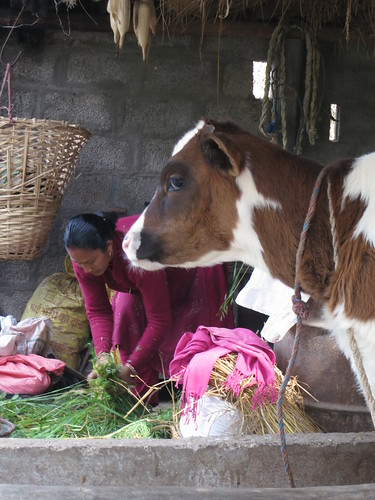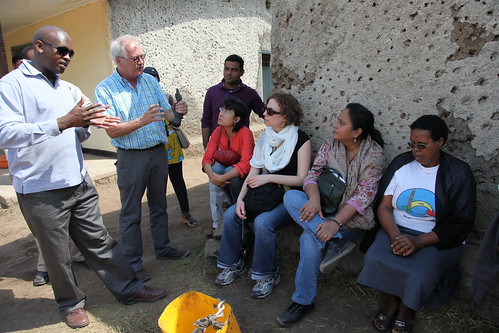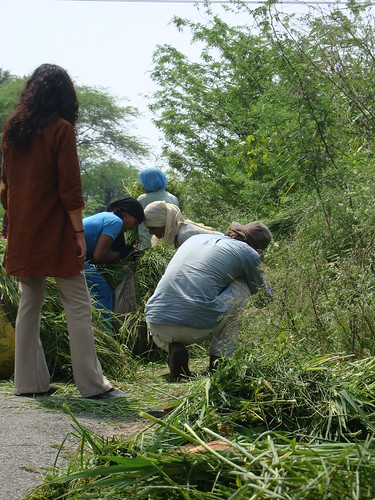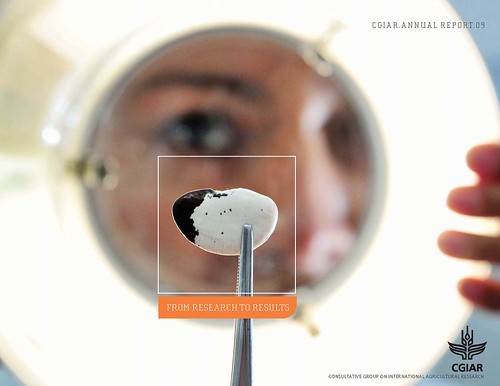Maize field at Kampi ya Moto, Kenya (photo on Flickr by C Schubert/CCAFS).
A September 2013 special issue of the scientific journal Field Crops Research describes research to improve, and make wider use of, dual-purpose maize (or corn) varieties, which are used for their stover — the stalk, leaves and other residue of the plant after the grain has been harvested — as well as for their grain. Among smallholder farmers in Africa and other developing regions, maize stover is a common, and critically important, supplementary feed for ruminant livestock.
The special journal issue was edited by edited by Elaine Grings, of South Dakota State University (and formerly of ILRI); Olaf Erenstein, of the International Maize and Wheat Improvement Center; and Michael Blümmel, of the International Livestock Research Institute (ILRI).
The following statements are excerpted from a synthesis paper written by the editors, which presents key findings in 12 papers about the potential for dual-purpose maize varieties to meet changing maize demands.
This special issue substantiates that dual-purpose maize varieties are technically feasible and have a large potential market, particularly in many emerging markets. The reported findings argue the case for continued investments in maize stover R&D and thus reigniting earlier dual-purpose crop research in general.
Children weed a maize plot at Kampi ya Moto, Kenya (photo on Flickr by C Schubert /CCAFS).
Among the findings are the following.
‘Maize — or corn (Zea mays L.) — now is the most important global cereal in terms of production reflecting its versatility in use, including human food, animal feed and fodder, industrial products and biofuel.’
‘Despite being a versatile crop, maize production and maize breeding efforts over time have typically had a single-purpose orientation [on improving grain yields]. . . . Even smallholders within mixed maize-livestock systems typically focus on maize grain yield . . . , with maize stover as additional byproduct and benefit.’
There are prospects within the range of stover quality to increase fodder quality without compromising grain yield.
‘It is this potential of dual-purpose varieties that has reignited research interest and some of the research underlying this special issue. Indeed, despite earlier skepticism only a decade ago, substantial progress has been made in developing dual-purpose maize options for both grain and fodder purposes . . . .’
‘Maize germplasm differences in fodder quality can be exploited without compromising on grain yield.’
‘Confirmation of the relatively favorable feed value of maize stover vis-à-vis other coarse cereal residues — having at least par if not better feed quality traits compared to sorghum and millet, which have been the focus of prior dual-purpose crop improvement research and have been reported to contribute substantially to gross crop production values.’
‘Confirmation of being able to rely on a few key laboratory indicators . . . as good proxies for feed quality . . . as this enhances the ease of screening for feed quality traits.’
‘From a livestock nutrition viewpoint, an increase in stover quantity is only useful (unless making stover cheaper) if livestock can respond with increased intake, which is stover quality dependent.’
A dairy cow on one of Kenya’s many smallholder farms consumes maize stover, an important supplementary feed in East Africa (photo credit: ILRI).
Read the synthesis paper, as well as other papers, in this special issue of Field Crops Research 153 (2013) 107–112, edited by Elaine Grings, Olaf Erenstein and Michael Blümmel. The papers authored by ILRI scientists include the following.
Erenstein O, Blümmel M and Grings E 2013:
Potential for dual-purpose maize varieties to meet changing maize demands: Overview
Homann Kee-Tui S, Blümmel M, Valbuena D, Chirima A, Masikati P, Rooyen AF van and Kassie GT 2013:
Assessing the potential of dual-purpose maize in southern Africa: A multi-level approach
Anandan S, Khan AA, Ravi D, Sai Butcha Rao M, Reddy YR and Blümmel M 2013:
Identification of a superior dual purpose maize hybrid among widely grown hybrids in South Asia
and value addition to its stover through feed supplementation and feed processing
Ravi D, Khan AA, Sai Butcha Rao M and Blümmel M 2013:
A note on suitable laboratory stover quality traits for multidimensional maize improvement
Ramana Reddy Y, Ravi D, Ramakrishna Reddy C, Prasad KVSV, Zaidi PH, Vinayan MT and Blümmel M 2013:
A note on the correlations between maize grain and maize stover quantitative and qualitative traits
and the implications for whole maize plant optimization
Lukuyu BA, Murdoch AJ, Romney D, Mwangi DM, Njuguna JGM, McLeod A and Jama AN 2013:
Integrated maize management options to improve forage yield and quality on smallholder farms in Kenya
Ertiro BT, Twumasi-Afriyie S, Blummel M, Friesen D, Negera D, Worku M, Abakemal D and Kitenge K 2013:
Genetic variability of maize stover quality and the potential for genetic improvement of fodder value
Ertiro BT, Zeleke H, Friesen D, Blümmel M and Twumasi-Afriyie, S 2013:
Relationship between the performance of parental inbred lines and hybrids for food-feed traits in maize (Zea mays L.) in Ethiopia
Zaidi PH, Vinayan MT and Blümmel M 2012:
Genetic variability of tropical maize stover quality and the potential for genetic improvement of food-feed value in India
Vinayan MT, Babu R, Jyothsna T, Zaidi PH and Blümmel M 2013:
A note on potential candidate genomic regions with implications for maize stover fodder quality
Read about this special issue in the ILRI Clippings Blog:
Field Crops Research special issue on dual-purpose maize for food and feed, 15 Nov 2013.

